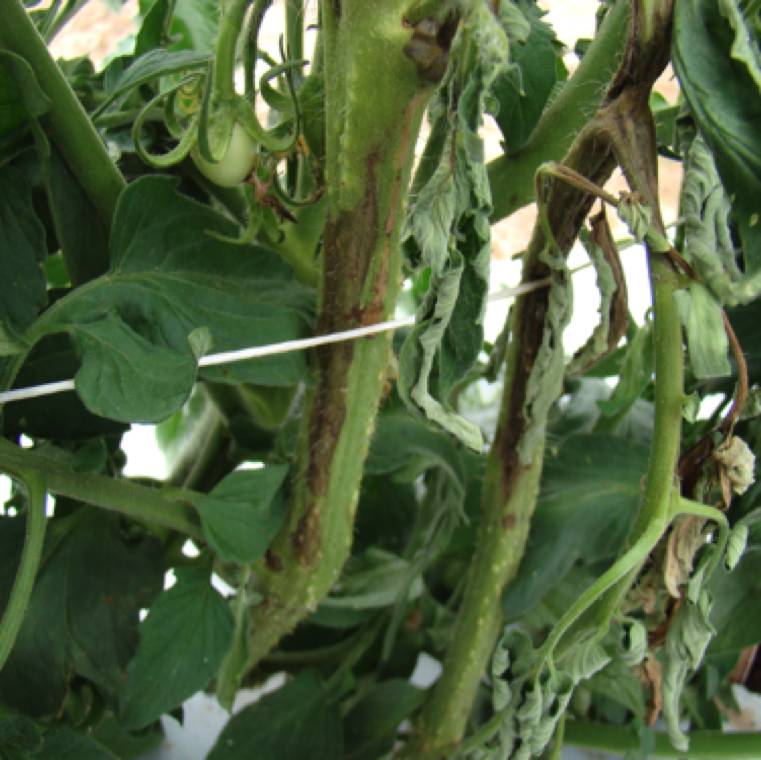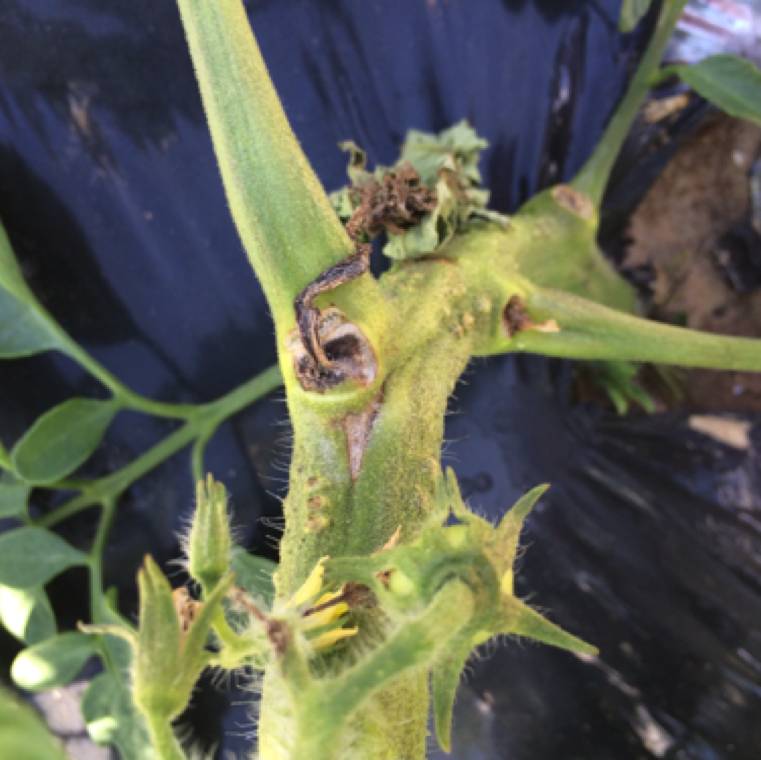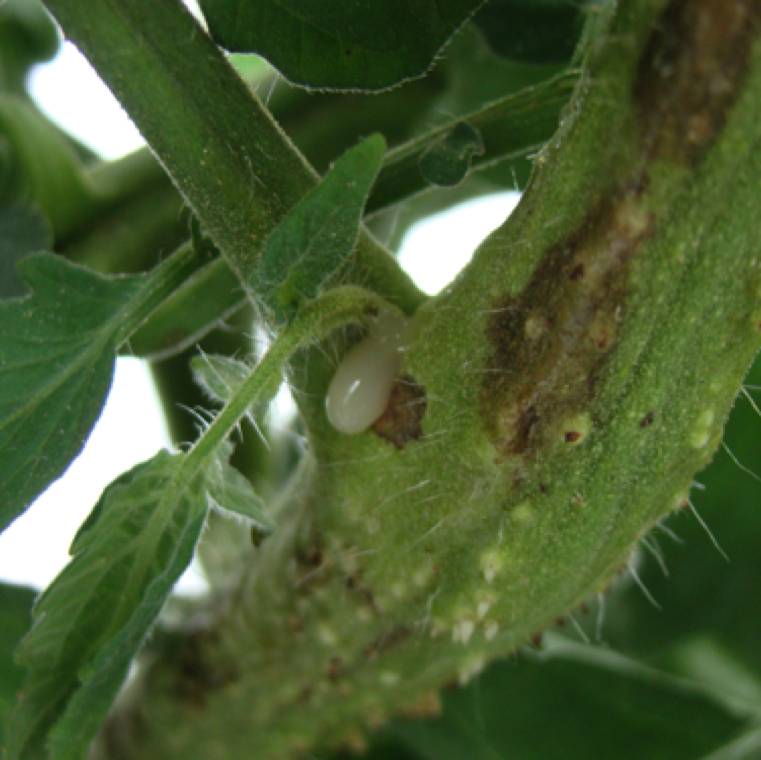Tomato
Bacterial Pith Necrosis

Pseudomonas spp. including corrugata, mediterranea, cichorii, viridiflava and fluorescens
Bacterial Disease

Pseudomonas spp. including corrugata, mediterranea, cichorii, viridiflava and fluorescens
Bacterial Disease

Pseudomonas spp. including corrugata, mediterranea, cichorii, viridiflava and fluorescens
Bacterial Disease

Pseudomonas spp. including corrugata, mediterranea, cichorii, viridiflava and fluorescens
Bacterial Disease
Bacterial Pith Necrosis of Tomato
Bacterial pith necrosis, caused by Pseudomonas spp., affects tomatoes and other vegetable crops, leading to wilting, stem cankers, and vascular discoloration. It thrives in humid conditions, especially in greenhouses and high tunnels.
Symptoms
Early Symptoms:
- Chlorosis (yellowing) of young leaves.
- Wilting and yellowing of lower leaves.
- Dark brown, irregular streak-like lesions on stems, petioles, and peduncles.
Advanced Symptoms:
- Irregular lesions on infected stems, peduncles, and leaves.
- Pith discoloration—hollow, brown, or chambered when sliced longitudinally.
- Stem cankers at wound sites, leading to plant collapse.
- Bacterial ooze from affected stems, similar to bacterial wilt.
- Adventitious roots forming from cracked stems.
- Fruit infection—small black spots surrounded by soft rot.
- Severe infection can cause plant death, but symptoms may lessen as the plant matures.
Pathogen & Spread
- Caused by: Pseudomonas corrugata, P. mediterranea, P. cichorii, P. viridiflava, P. fluorescens, and other Pseudomonas spp.
- Entry points: Natural openings, wounds from poor plant tying, pruning injuries, and contaminated tools.
- Spread by:
- Contaminated equipment and irrigation water.
- Water splashing on stems and leaves.
- Seed transmission during fruit development.
Favorable Conditions
- Greenhouses & high tunnels—high humidity, excessive irrigation, and drastic temperature changes.
- Excess nitrogen—promotes rapid early growth, making plants more susceptible.
- Cool, cloudy weather and low night temperatures increase disease risk.
- Temperatures up to 37°C support pathogen growth.
- First fruit set at mature green stage—critical period for infection.
Host Range
- Tomato and pepper.
- Other vegetable and ornamental crops.
Conclusion
Bacterial pith necrosis is a serious vascular disease, especially in greenhouse-grown tomatoes. Proper pruning, reducing excess nitrogen, and avoiding wounds during handling can help prevent infections.








